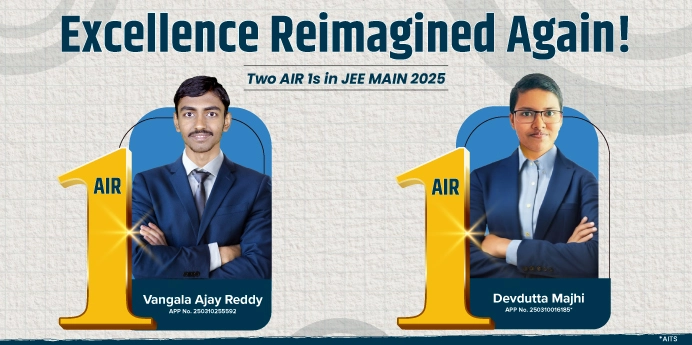










Courses

By Maitree Choube
|
Updated on 4 Sep 2025, 16:20 IST
Respiration in Organisms is an important chapter in the CBSE Class 7 Science syllabus. This chapter covers the fundamental concepts of respiration, including the process of breathing, the role of respiratory organs, and the importance of respiration for living organisms.
To help students master this chapter, we have compiled a comprehensive set of MCQ questions with answers. These respiration in organisms class 7 mcq questions are based on the NCERT solutions for Class 7 Science and cover various aspects of respiration, such as:
Practicing these MCQ questions will help students develop a strong understanding of the concepts and prepare them for their exams. The NCERT solutions for Class 7 Science provide detailed explanations for each question, ensuring that students have a thorough grasp of the subject matter. By working through these MCQ questions, students will be able to:
Overall, the Respiration in Organisms MCQ Questions for Class 7 Science, based on the NCERT solutions, are a valuable resource for students looking to excel in their exams and develop a strong foundation in this important topic.
Q. Which of the following is the primary organ of the respiratory system in humans?
(a) Heart
(b) Kidney
(c) Lungs

(d) Stomach
Answer: (c) Lungs

JEE

NEET

Foundation JEE

Foundation NEET

CBSE
Q. During inhalation, the diaphragm:
(a) Contracts and moves down
(b) Relaxes and moves up
(c) Remains stationary

(d) Expands and moves up
Answer: (a) Contracts and moves down
Q. The tiny air sacs in the lungs where the exchange of gases takes place are called:
(a) Bronchi
(b) Alveoli
(c) Bronchioles
(d) Trachea
Answer: (b) Alveoli
Q. Respiration in plants occurs through:
(a) Roots
(b) Stomata
(c) Flowers
(d) Fruits
Answer: (b) Stomata
Also Check: NCERT Solutions for Class 7 Science Chapter 6
Q. The process of breaking down glucose to release energy is called:
(a) Photosynthesis
(b) Respiration
(c) Transpiration
(d) Circulation
Answer: (b) Respiration
Q. Which gas is taken in during inhalation?
(a) Carbon dioxide
(b) Nitrogen
(c) Oxygen
(d) Hydrogen
Answer: (c) Oxygen
Q. The respiratory pigment in humans that transports oxygen is:
(a) Hemoglobin
(b) Chlorophyll
(c) Myoglobin
(d) Carotene
Answer: (a) Hemoglobin
Q. The muscle that plays a crucial role in breathing is the:
(a) Diaphragm
(b) Trapezius
(c) Biceps
(d) Deltoid
Answer: (a) Diaphragm
Q. Anaerobic respiration occurs in the absence of:
(a) Water
(b) Light
(c) Oxygen
(d) Carbon dioxide
Answer: (c) Oxygen
Q. Which of the following is a by-product of aerobic respiration?
(a) Lactic acid
(b) Alcohol
(c) Carbon dioxide and water
(d) Glucose
Answer: (c) Carbon dioxide and water
Q. The respiratory system starts from the:
(a) Mouth
(b) Nose
(c) Larynx
(d) Trachea
Answer: (b) Nose
Q. In humans, exchange of gases takes place in:
(a) Heart
(b) Blood vessels
(c) Alveoli
(d) Diaphragm
Answer: (c) Alveoli
Q. In anaerobic respiration in muscles, glucose is converted to:
(a) Carbon dioxide
(b) Lactic acid
(c) Water
(d) Oxygen
Answer: (b) Lactic acid
Q. Which of the following organisms can perform both aerobic and anaerobic respiration?
(a) Humans
(b) Yeast
(c) Fish
(d) Plants
Answer: (b) Yeast
Q. Which part of the respiratory system is also known as the windpipe?
(a) Esophagus
(b) Trachea
(c) Bronchi
(d) Pharynx
Answer: (b) Trachea
Q. In the absence of oxygen, yeast cells convert glucose into:
(a) Lactic acid and water
(b) Alcohol and carbon dioxide
(c) Oxygen and water
(d) Carbon dioxide and water
Answer: (b) Alcohol and carbon dioxide
Q. What is the main function of the respiratory system?
(a) To pump blood
(b) To supply oxygen to the body
(c) To digest food
(d) To filter waste products
Answer: (b) To supply oxygen to the body
Q. During respiration, energy is stored in the form of:
(a) ATP
(b) DNA
(c) RNA
(d) ADP
Answer: (a) ATP
Q. Which of the following is NOT a part of the respiratory system?
(a) Lungs
(b) Heart
(c) Trachea
(d) Diaphragm
Answer: (b) Heart
Q. What is the main function of alveoli in the lungs?
(a) Pump blood
(b) Exchange gases
(c) Digest food
(d) Produce energy
Answer: (b) Exchange gases
Q. In which part of the plant does respiration mainly occur?
(a) Flowers
(b) Leaves
(c) Stems
(d) Roots
Answer: (b) Leaves
Q. What is the end product of anaerobic respiration in muscles?
(a) Alcohol
(b) Lactic acid
(c) Glucose
(d) Oxygen
Answer: (b) Lactic acid
Q. The process of inhaling and exhaling is called:
(a) Circulation
(b) Respiration
(c) Excretion
(d) Digestion
Answer: (b) Respiration
Q. Which gas is produced during respiration?
(a) Oxygen
(b) Carbon dioxide
(c) Nitrogen
(d) Hydrogen
Answer: (b) Carbon dioxide
Q. The flap that covers the trachea during swallowing is called:
(a) Larynx
(b) Epiglottis
(c) Pharynx
(d) Bronchi
Answer: (b) Epiglottis
Q. The exchange of gases in the alveoli occurs by:
(a) Osmosis
(b) Diffusion
(c) Active transport
(d) Endocytosis
Answer: (b) Diffusion
Q. During aerobic respiration, glucose is broken down into:
(a) Carbon dioxide and water
(b) Lactic acid
(c) Alcohol
(d) Oxygen and water
Answer: (a) Carbon dioxide and water
Q. Which structure prevents food from entering the trachea?
(a) Diaphragm
(b) Epiglottis
(c) Alveoli
(d) Bronchi
Answer: (b) Epiglottis
Q. During respiration, the energy is released in the form of:
(a) Light
(b) ATP
(c) DNA
(d) Proteins
Answer: (b) ATP
Q. What is the role of hemoglobin in the respiratory system?
(a) Transport oxygen
(b) Digest food
(c) Filter waste
(d) Produce energy
Answer: (a) Transport oxygen
No courses found
Practice MCQs on respiration in organisms because they help us understand concepts like breathing, aerobic respiration, anaerobic respiration, and prepare well for exams.
The most important topics include types of respiration, breathing process, respiration in plants and animals, role of diaphragm, and respiration in insects and fish.
The physical process of breathing, inhaling and exhaling air is called breathing and the chemical process of releasing energy out of food is called respiration.
The questions are usually about examples of anaerobic respiration, exchange of gases in humans, respiration in plants, and how energy is produced.
Revise all NCERT Class 7 Science Respiration in Organisms important questions, practice previous year MCQs, and focus on diagrams like the respiratory system.